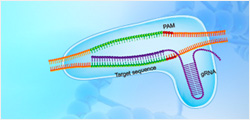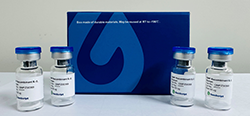Competence for genetic transformation allows the opportunistic human pathogen to take up exogenous DNA for incorporation into its own genome. This ability may account for the extraordinary genomic plasticity of this bacterium, leading to antigenic variation, vaccine escape, and the spread of antibiotic resistance. The competence system has been thoroughly studied and its regulation is well-understood. Additionally, over the last decade, several stress factors have been shown to trigger the competent state, leading to the activation of several stress response regulons. The arrival of next-generation sequencing techniques allowed us to update the competence regulon, the latest report of which still... More
Competence for genetic transformation allows the opportunistic human pathogen to take up exogenous DNA for incorporation into its own genome. This ability may account for the extraordinary genomic plasticity of this bacterium, leading to antigenic variation, vaccine escape, and the spread of antibiotic resistance. The competence system has been thoroughly studied and its regulation is well-understood. Additionally, over the last decade, several stress factors have been shown to trigger the competent state, leading to the activation of several stress response regulons. The arrival of next-generation sequencing techniques allowed us to update the competence regulon, the latest report of which still depended on DNA microarray technology. Enabled by the availability of an up-to-date genome annotation, including transcript boundaries, we assayed time-dependent expression of all annotated features in response to competence induction, were able to identify the affected promoters and produced a more complete overview of the various regulons activated during competence. We show that 4% of all annotated genes are under direct control of competence regulators ComE and ComX, while the expression of a total of up to 17% of all genes is, either directly or indirectly, affected. Among the affected genes are various small RNAs with an as-yet-unknown function. Besides the ComE and ComX regulons, we were also able to refine the CiaR, VraR (LiaR) and BlpR regulons, underlining the strength of combining RNA-seq with a well-annotated genome. is an opportunistic human pathogen responsible for over a million deaths every year. Although both vaccination programs and antibiotic therapy have been effective in prevention and treatment of pneumococcal infections, respectively, the sustainability of these solutions is uncertain. The pneumococcal genome is highly flexible, leading to vaccine escape and antibiotic resistance. This flexibility is predominantly facilitated by competence, a state allowing the cell to take up and integrate exogenous DNA. Thus, it is essential to obtain a detailed overview of gene expression during competence. This is stressed by the fact that several classes of antibiotics can lead to competence. Previous studies on the competence regulon were performed with microarray technology and limited to an incomplete set of known genes. Using RNA-sequencing, combined with an up-to-date genome annotation, we provide an updated overview of competence-regulated genes.



































